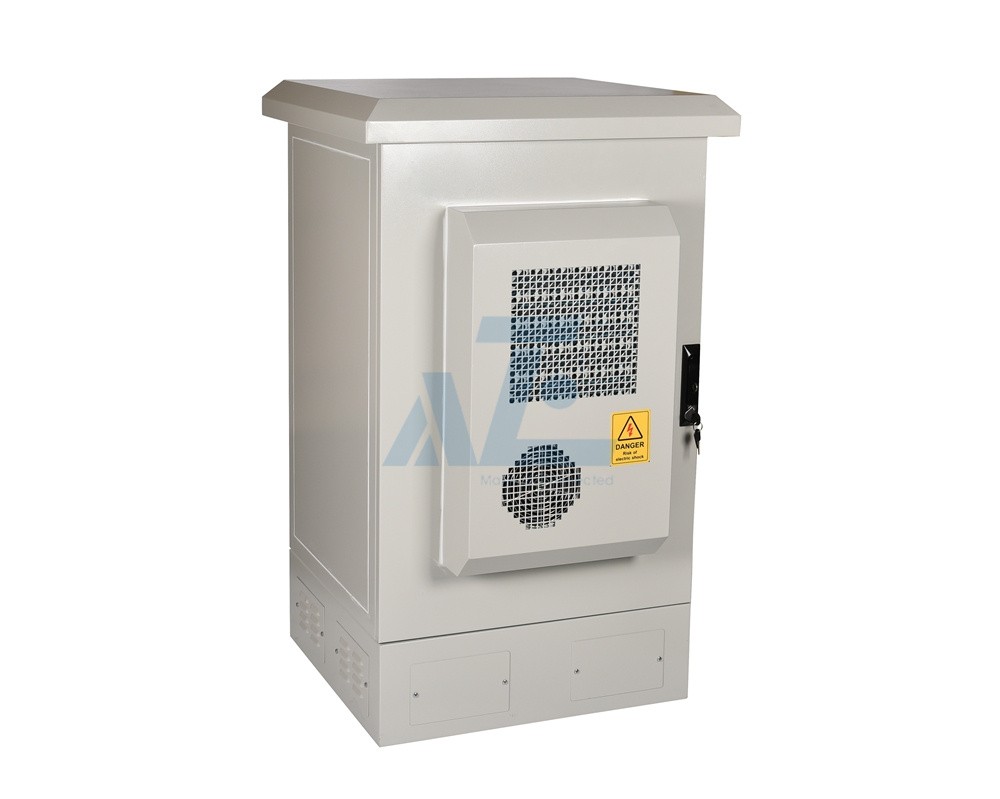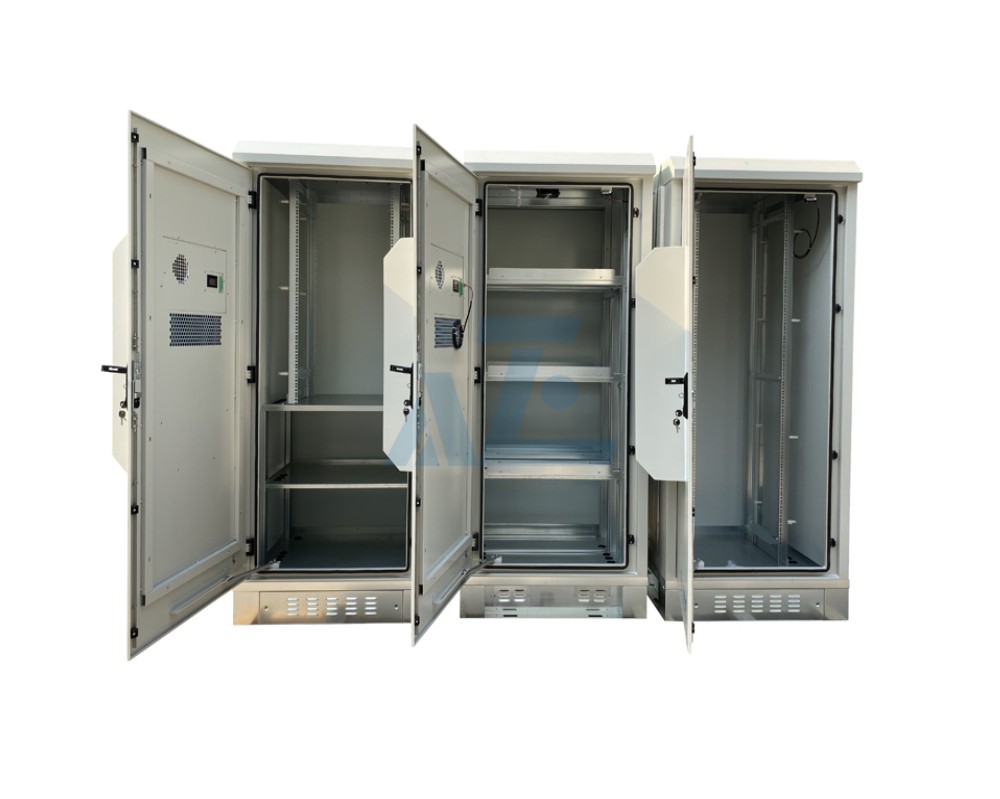Outdoor Telecom Enclosure with HVAC, Secure Your IT OUTDOOR in harsh Environment
AZE Telecom offers top-quality weatherproof outdoor electrical enclosures and telecom cabinets. Designed to protect your equipment from rain, dust, and extreme temperatures, our waterproof and customizable solutions ensure reliability in any environment. Learn more!
Custom
Warranty
Certificates
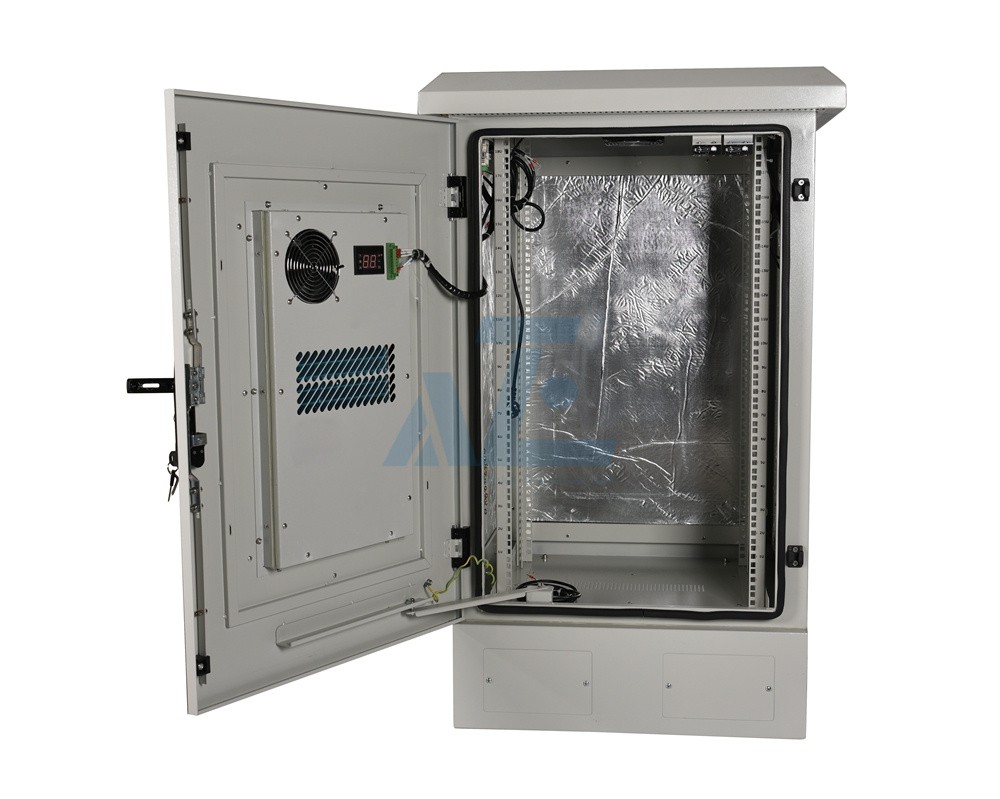
24U 750mm Wide x 600mm Deep IP55 Outdoor Cabinet with 800W Air Conditioner
IP55 Rated | 24U | AC110V or 220V 2700BTU Cabinet Air Conditioner
RODF247560ACK8W

18U 30inch Wide x 30inch Deep IP55 Outdoor Enclosure with 500W Air Conditioner
IP55 Rated | 18U | AC110V or 220V 1700BTU Cabinet Air Conditioner
RODF187575ACK5W

32U 32inch Wide x 32inch Deep NEMA 4 Outdoor Enclosure with 5100BTU Air Conditioner
IP55 Rated | 32U | AC110V or 220V 1500W Cabinet Air Conditioner
RODF328080AC1K5W

NEMA 4/NEMA 4X Outdoor Enclosure with 10200BTU Air Conditioner,36U,32inch Wide x 32inch Deep
NEMA 4 Rated | 42U | AC110V or 220V 10200BTU Cabinet Air Conditioner
RODF428080AC3KW
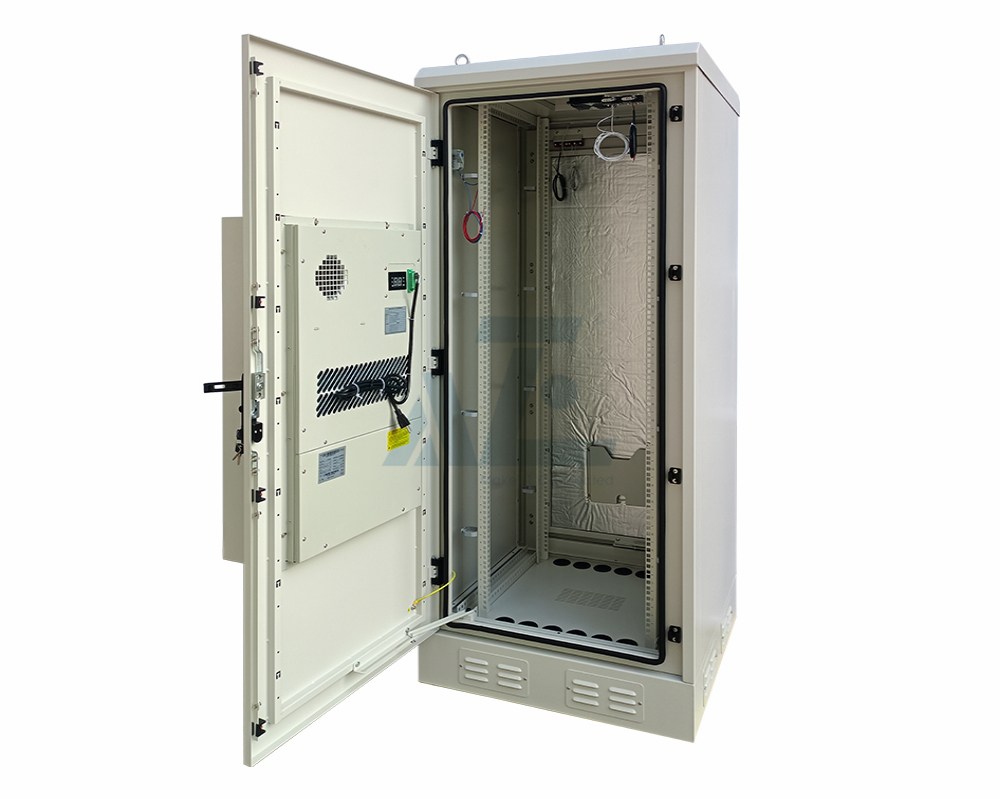
36U 32inch Wide x 32inch Deep NEMA 4 Outdoor Enclosure with 10200BTU Air Conditioner
IP55 Rated | 36U | AC110V or 220V 3000W Cabinet Air Conditioner
RODF368080AC3KW

36U 32inch Wide x 32inch Deep NEMA 4 Outdoor Enclosure with 6800BTU Air Conditioner
IP55 Rated | 36U | AC110V or 220V 2000BTU Cabinet Air Conditioner
RODF368080AC2KW
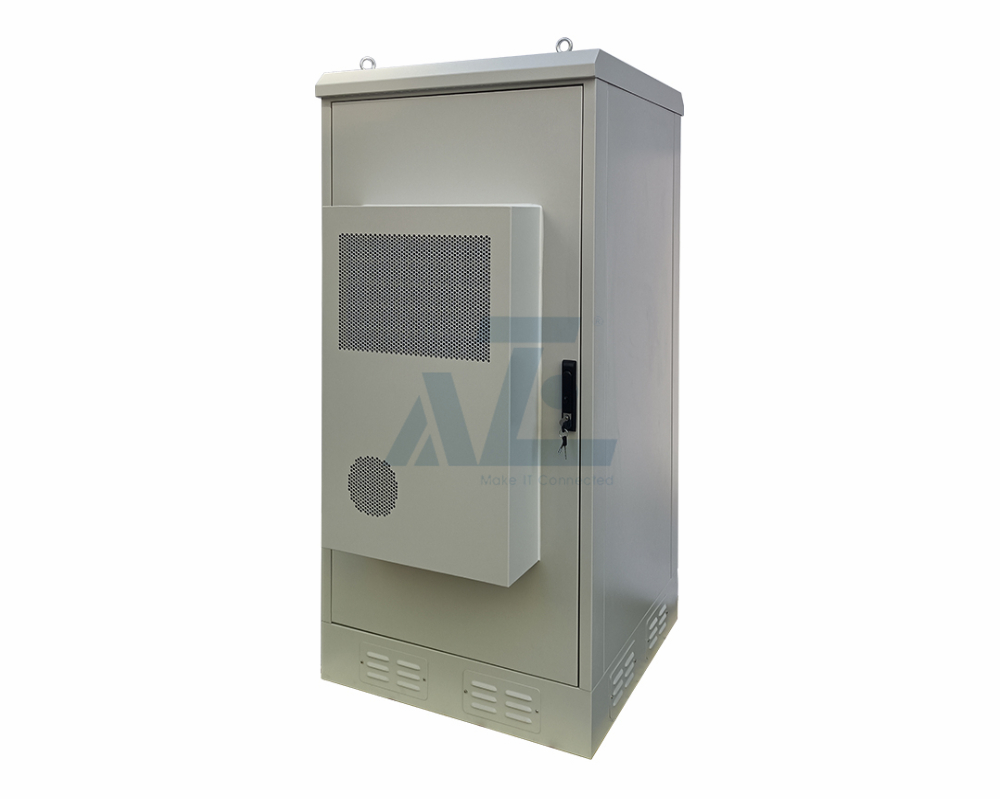
27U 32inch Wide x 32inch Deep NEMA 4 Outdoor Enclosure with 3400BTU Air Conditioner
IP55 Rated | 27U | AC110V or 220V 1000W Cabinet Air Conditioner
RODF278080AC1KW

24U 32inch Wide x 32inch Deep NEMA 4 NEMA 4X Outdoor Enclosure with 2700BTU Air Conditioner
IP55 Rated | 24U | AC110V or 220V 800W Cabinet Air Conditioner
RODF248080ACK8W

22U 32inch Wide x 32inch Deep NEMA 4 Outdoor Enclosure with 1700BTU Air Conditioner
IP55 Rated | 22U | AC110V or 220V 500W Cabinet Air Conditioner
RODF228080ACK5W
Protect Your Electrical Equipment with AZE Telecom's Weatherproof Outdoor Telecom Enclosures
In today’s connected world, protecting your electrical and telecom equipment from harsh outdoor conditions is critical. At AZE Telecom, we specialize in designing and manufacturing weatherproof outdoor electrical enclosures and outdoor enclosures for electrical equipment that ensure your systems remain safe, secure, and operational, no matter the environment.
Why Choose AZE's Outdoor Telecom Enclosures?
Outdoor environments expose electrical and telecom equipment to rain, snow, dust, extreme temperatures, and even vandalism. Without proper protection, your equipment is at risk of damage, leading to costly downtime and repairs. AZE Telecom’s outdoor electrical cabinets and enclosures are engineered to withstand these challenges, providing unmatched durability and reliability.
Main Product Range
1. Weatherproof Outdoor Electrical Enclosures
-
Designed to protect electrical equipment from rain, dust, and extreme temperatures.
-
Available in stainless steel, polycarbonate, and fiberglass for superior durability.
-
Ideal for housing control panels, telecom devices, and network equipment.
2. Outdoor Enclosures for Electrical Equipment
-
Fully sealed and waterproof outdoor enclosures to prevent water ingress.
-
Features IP66 and NEMA 4X ratings for maximum protection.
-
Perfect for industrial settings, telecom infrastructure, and public installations.
3. Waterproof Electrical Cabinets Outdoor
-
Heavy-duty cabinets designed for outdoor electrical equipment.
-
Includes ventilation systems and cooling fans to prevent overheating.
-
Lockable doors for added security.
4. Rack Mounted Weatherproof Enclosures
-
Compatible with standard 19-inch rack mounts for easy installation.
-
Protects rack-mounted equipment from environmental hazards.
-
Ideal for data centers and telecom applications.
5. Outdoor Rated Enclosure with Fan
-
Equipped with integrated fans for optimal airflow and temperature control.
-
Designed for outdoor telecom equipment cabinets and electrical enclosures.
-
Ensures reliable performance in high-temperature environments.
6. Outdoor Pole Mounted Equipment Cabinet
-
Compact and secure, designed for pole-mounted installations.
-
Protects telecom equipment and electrical devices in remote locations.
-
Durable construction to withstand harsh weather conditions.
7. Superior Telecom Data Cabinets Exterior
-
High-performance cabinets for outdoor telecom equipment.
-
Features weatherproof seals, lockable doors, and cable management systems.
-
Perfect for data centers and telecom infrastructure.
8. Outdoor Telecom Cabinet Manufacturers
-
As a leading manufacturer, AZE Telecom offers customizable solutions for outdoor enclosures.
-
Tailored designs to meet specific project requirements, including size, material, and additional features.
Key Features of AZE's Outdoor Telecom Enclosures
-
Weatherproof & Waterproof: Protects against rain, snow, dust, and humidity.
-
Durable Materials: Resistant to corrosion, UV radiation, and extreme temperatures.
-
Ventilation & Cooling: Integrated fans and ventilation systems for optimal performance.
-
Lockable & Secure: Robust hinges and lockable doors for added security.
-
Customizable: Tailored solutions to meet your specific needs.
Applications of AZE's Outdoor Telecom Enclosures
-
Telecom Infrastructure: Protect communication cabinets and distribution cabinets in remote or outdoor locations.
-
Industrial Settings: Safeguard control panels and utility cabinets in manufacturing plants or construction sites.
-
Public Spaces: House AV equipment and media cabinets for outdoor events or public installations.
-
Data Centers: Secure servers and network equipment in outdoor data centers.
Why Choose AZE Telecom?
At AZE Telecom, we are committed to providing high-quality, reliable solutions for your outdoor equipment protection needs. Our weatherproof outdoor electrical enclosures and outdoor telecom equipment cabinets are designed to:
-
Maximize uptime by protecting your equipment from environmental hazards.
-
Save space with wall-mounted, pole-mounted, and free-standing designs.
-
Offer customization to meet your specific requirements.
Explore AZE's Outdoor Telecom Enclosures Solutions Today
Whether you need rack mounted weatherproof telecom enclosures, outdoor rated telecom enclosures with fans, or superior telecom data cabinets exterior, AZE Telecom has the perfect solution for you. Browse our range of outdoor electrical cabinets and enclosures and discover why we’re a trusted name in the telecom industry.
An outdoor telecom enclosure is a specialized cabinet designed to house and protect telecommunications equipment in outdoor environments. These enclosures ensure that critical telecom systems function reliably despite exposure to harsh environmental conditions.
AZE's outdoor telecom enclosures with air conditioner are ideal for applications where your expensive and sensitive network equipment is exposed environmental factors such as dust and water.The outdoor server rack also has emergency fans with a dust-proof cover located at the top of the cabinet for greater airflow/cooling in case of air conditioner failed. All fixtures are internal to the cabinet to provide a secure solution.
-
16U,18U,22U,24U,27U,32U,42U or other customize sizes available
-
19" or 23" adjustable rack
-
Galvanized steel(Aluminum,stainless steel,color coated steel optional)
-
Cabinet Air Conditioner (Heat Exchanger/Thermoelectric Cooler(TEC) Optional)
Key Features of Outdoor Telecom Enclosures
Outdoor telecom enclosure with air conditioner is designed to house a variety of telecommunication equipment with 19" or 23" racking rails, they can provide protection from vandalism, dust, rain, snow and dripping water. With climate controlled parts such as (cabinet air conditioner,heat exchanger or TEC) ,it can keep a stable temperature inside cabinet so as to increase equipment's life and stability.When selecting an outdoor telecom enclosure, ensure it meets industry standards, aligns with your specific needs, and offers reliable protection and functionality for long-term operations.
-
Environmental Protection
-
Weather Resistance: Sealed to prevent water, dust, and debris ingress.
-
Corrosion Resistance: Made from durable materials like stainless steel or aluminum with anti-corrosion coatings.
-
Temperature Management: Equipped with thermal insulation, fans, heat exchangers, or air conditioning systems.
-
-
Security
-
Tamper-proof locks and hinges.
-
Alarm systems for unauthorized access detection.
-
Reinforced construction to withstand vandalism.
-
-
Structural Integrity
-
Designed to handle extreme weather conditions such as wind, rain, snow, and UV exposure.
-
Compliant with industry standards like GR-487, NEMA 4X, or IP65/IP66.
-
-
Cable Management
-
Internal cable routing systems to ensure organized and safe cabling.
-
Grommets and sealings for cable entry and exit points.
-
-
Power and Backup Systems
-
Integrated power supply units with options for battery backup or solar power.
-
Grounding and surge protection for electrical safety.
-
-
Size and Modularity
-
Available in various sizes, from compact cabinets to larger enclosures for complex setups.
-
Modular designs allow for scalability and customization
-
Custom Your Outdoor Electrical Telecom Enclosure with AZE, our weatherproof solution for your electronics system have features:
- Custom IP55 or other IP rating Enclosure
- IP55/IP65 Certification from 3rd party testing lab.
- Cold Rolled steel, 201 stainless steel, 304 stainless steel, 316 stainless steel as well as galvanized steel, which will suit your various requirements and budgets.These quality materials can protect the equipment against harsh weather conditions like rain, wind and sand storms.
As an Outdoor Electrical Telecom Enclosure Manufacturer in China, AZE has a wide range selection of outdoor electrical telecom enclosures
- Outdoor electrical telecom enclosure is designed to keep the enclosed equipment safe and dry regardless of how harsh the condition is. Our outdoor electrical enclosures are designed and manufactured to provide a degree of protection against rain, sleet, snow, ice, dirt, and dust.
- This enclosure is suitable in a remote location where enclosure can withstand the toughest and wind and weather conditions, even unattended for a longer period of time. From humidity, temperature fluctuations, sunlight, to extreme conditions like seawater resistance or earthquake resistance through vandalism protection, these electrical enclosures can resist it all.
- Outdoor electrical telecom enclosure mostly suitable in various applications such as public work, traffic, security cabinets, control and instruments, telecommunication, electrical substation, windfarms and solar farms, and many more.
Applications
AZE specializes in manufacturing outdoor telecom enclosures with a focus on quality and customization to meet specific client needs,outdoor telecom enclosures are essential for various applications:
-
Base Stations: Housing equipment for cellular networks (4G, 5G).
-
Fiber Optic Networks: Protecting distribution nodes and optical amplifiers.
-
Smart City Infrastructure: Supporting IoT devices and edge computing.
-
Emergency Communication Systems: Ensuring connectivity in remote or disaster-prone areas.
Types of Outdoor Telecom Enclosures
Known for its expertise in outdoor telecom cabinets and air conditioning solutions, AZE provides robust and reliable products for communication infrastructure.When selecting a manufacturer, consider factors such as product quality, customization options, compliance with industry standards, and after-sales support to ensure the solution aligns with your specific needs.
-
Standard Enclosures: Pre-designed for general telecom applications.
-
Custom Enclosures: Tailored to specific customer requirements.
-
Climate-Controlled Enclosures: Include air conditioning or heating for temperature-sensitive equipment.
-
Pole-Mount Enclosures: Compact and designed for mounting on utility poles.
-
Ground-Mount Enclosures: Larger units installed at ground level for greater equipment capacity.
How to Build a Quality Outdoor Telecom Cabinet?
The process of producing an outdoor telecom cabinet involves several stages, from design and material selection to fabrication, assembly, testing, and quality control. Here's a breakdown of the typical production process:
1. Design Phase
-
Requirement Gathering: Understanding the specific needs for the telecom cabinet, such as environmental conditions (e.g., extreme temperatures, humidity), the equipment it will house (e.g., routers, switches, batteries), and security features.
-
CAD Design: Designers create detailed drawings and 3D models of the cabinet. This includes considerations for:
-
Ventilation (to ensure proper airflow and cooling)
-
Accessibility (for maintenance)
-
Cable management
-
Security (locks, access control)
-
Weather resistance (rain, dust, etc.)
-
-
Prototyping: A prototype may be made to ensure the design meets all requirements, including space for components, ease of maintenance, and durability.
2. Material Selection
-
Metallic Materials: Most telecom cabinets are made from steel, aluminum, or galvanized steel. These materials are chosen for their strength, durability, and ability to withstand harsh outdoor environments.
-
Surface Coatings: To prevent rust and corrosion, materials are often coated with powder coatings or galvanization.
-
Insulation Materials: Depending on the location, some cabinets require insulation to regulate temperature.
3. Fabrication
-
Cutting: The selected material is cut into the necessary shapes for the walls, doors, panels, and other components. This is usually done using laser cutting, waterjet cutting, or CNC (Computer Numerical Control) machines.
-
Bending: The parts are bent into shape using hydraulic presses or CNC bending machines.
-
Welding: For structural integrity, parts are welded together. Some cabinets are fully welded, while others may be assembled using screws or bolts.
-
Drilling: Holes are drilled for screws, vents, and cable entry points.
-
Surface Treatment: Metal parts undergo surface treatment processes, like sandblasting or chemical cleaning, followed by coating (e.g., powder coating, galvanizing, or painting) for corrosion protection.
4. Assembly
-
Panel Assembly: The main panels are attached together, forming the structure of the cabinet.
-
Door Installation: The doors are fitted, including locks and handles for security. Depending on the design, these might be heavy-duty, tamper-resistant doors.
-
Cooling Systems: If needed, fans, heat exchangers, or air conditioners are installed to manage the internal temperature.
-
Cable Management: Racks, trays, or other cable management solutions are installed to organize and protect cables.
5. Electronics and Component Installation
-
Power Supply: Installations include power management systems, batteries, and surge protectors, depending on the intended use of the cabinet.
-
Equipment Mounting: Shelves, racks, and other mounting hardware are added to hold telecom equipment such as routers, servers, and switches.
-
Cooling Equipment: Depending on the design, air conditioning or passive cooling mechanisms like heat sinks or fans are installed.
6. Testing and Quality Control
-
Structural Testing: The cabinet is tested for strength and stability to ensure it can withstand environmental conditions like high winds or physical impacts.
-
Weather Resistance Testing: Cabinets are tested for resistance to water ingress, dust, UV radiation, and temperature extremes.
-
Functionality Testing: Electrical systems are tested to ensure all components function properly, including power systems, cooling systems, and cable routing.
-
Security Testing: Locks, access control, and other security features are tested for effectiveness.
7. Packing and Shipping
-
Final Inspection: Once all tests are complete, the cabinet undergoes a final quality check to ensure it meets the required standards.
-
Packaging: The cabinet is carefully packaged to prevent damage during shipping. This may include protective wrapping, custom crates, or pallets.
-
Shipping: The finished products are then shipped to telecom operators, contractors, or distributors.
8. Installation and Maintenance (Post-production)
-
Site Preparation: Installation involves preparing the site for the cabinet, including site surveys to check for environmental factors such as location, power supply, and connectivity.
-
Installation: The cabinet is installed on-site, typically on a concrete pad or mounting base. All telecom equipment is configured and connected to the appropriate power sources and communication lines.
-
Ongoing Maintenance: Periodic inspections and maintenance to ensure the cabinet remains operational, including cleaning, checking cooling systems, and ensuring the security features are intact.
Key Considerations:
- Environmental Resistance: The cabinet must be designed to withstand the conditions it will face, such as rain, extreme heat, cold, dust, or snow. These considerations drive decisions around materials, seals, coatings, and the need for ventilation or cooling.
- Security: Telecom cabinets often contain valuable or critical infrastructure, so robust security measures are essential. This includes tamper-resistant locks, alarms, and surveillance.
- Compliance with Standards: Depending on the region, the cabinet must meet specific industry standards such as IP (Ingress Protection) ratings, seismic ratings, or fire safety standards.
This general process may vary slightly depending on the manufacturer and specific requirements of the telecom project.
With more than 10 years design and manufacturing experience, AZE's outdoor electrical telecom enclosure manufacturing capacity can support you to boom the business.Our outdoor electrical telecom enclosure come with an IP rating which tells you roughly which conditions they are designed,the outdoor electrical enclosures are constructed to meet the NEMA Standard types 3 and 4, thus, those enclosure could be protecting the contents inside from the environmental elements such as chemical, water, and dust.
- What is the purpose of a outdoor telecom enclosure?
The outdoor telecom enclosures, which are also referred to as telecommunications cabinets, are fully enclosed cabinets that help protect electrical cabling and other equipment from potentially damaging environments. Such damage can be caused by dust, rain, ice, and external heat.
- What do you need to know about outdoor telecom enclosures?
Designed for the telecommunication industry, our enclosures can be deployed in harsh outdoor environments both rural or residential.Don't forget about the panel layout and design and the need for environmental conditioning (cooling and heating). For electronics to survive in an outdoor enclosure, they typically require climate control.
- What are the dangers of terminating telecommunications equipment outdoors?
One of the biggest challenges of terminating your telecommunications equipment outdoors is finding outdoor enclosures that will be able to properly withstand the elements. Temperature, moisture, ice, shock hazards, and UV damage are all potential dangers to consider before purchasing an outdoor enclosure or cabinet.
- Why do you need to purchase a Outdoor Telecom Cabinet?
Outdoor Telecom cabinets are the ideal way of storing and protecting equipment at remote sites. These outdoor telecom equipment cabinets come in different styles and sizes, but all have the same general purpose: to protect valuable equipment from natural elements and vandalism
- Which is the best outdoor telecom electrical enclosure in China?
As a premier outdoor electrical enclosure manufacturer in China, AZE has provided telecommunication enclosure for over 10 years, keep developing an innovative range of telecom enclosure products for various applications.
As a leading manufacturer of outdoor electrical metal enclosure ,outdoor telecom enclosure and weatherproof telecom enclosure , AZE can support you to customize the outdoor electrical enclosure box to fulfill your specific needs in terms of shape, size, color, finish and cost valuable. In additional, AZE also offer cooling solution such as enclosure air conditioners, heat exchanger,TEC, cooling fans and power options. Further, the material, type of paint and design of all accessories on the enclosure could be customized. Our well-trained professional engineers will help you with all the details appropriate to your specific needs where your metal telecom enclosure have to be installed.
Our custom-made NEMA 3R & 4X telecom cabinets and enclosures will protect your valuable equipment from the elements without sacrificing performance, our broad portfolio features aesthetically-pleasing cabinets for power and battery, battery backup, macro cell site and micro cell site use.



